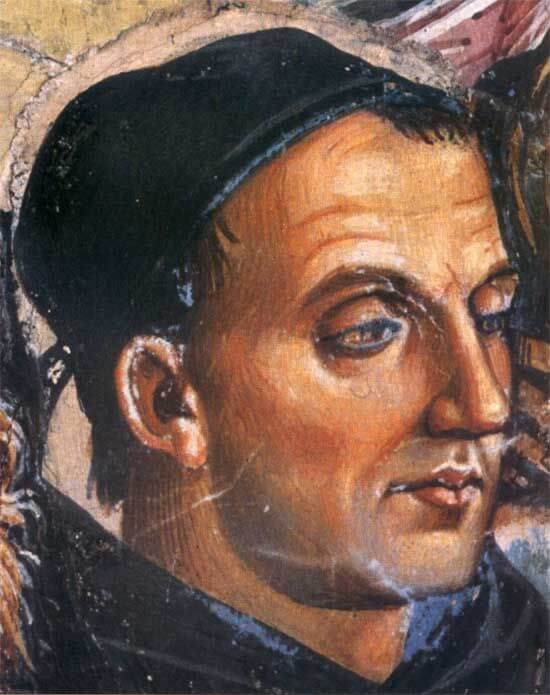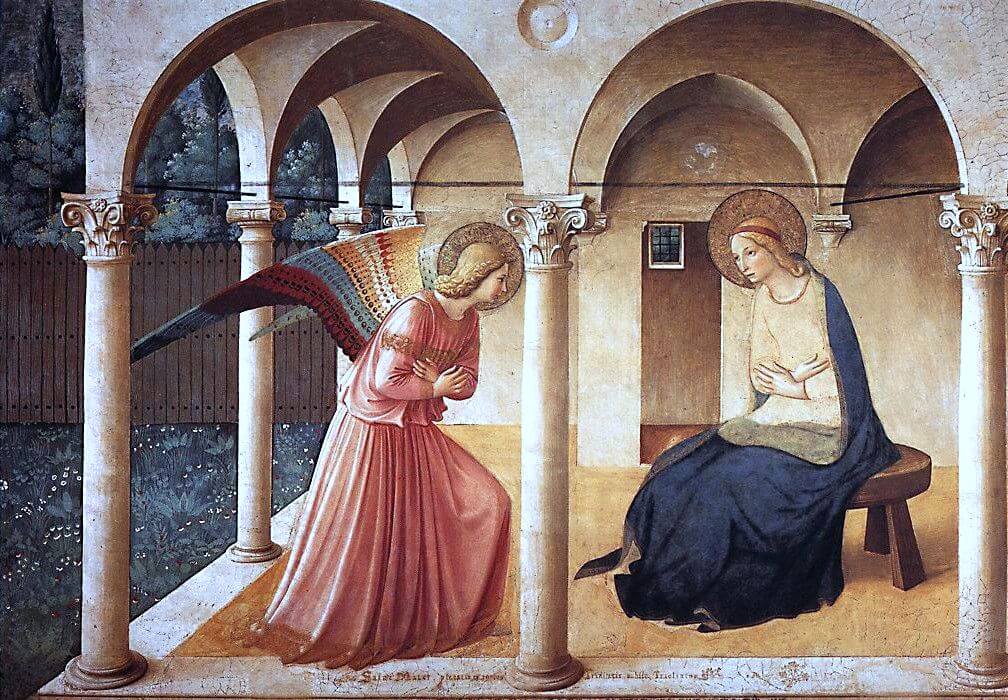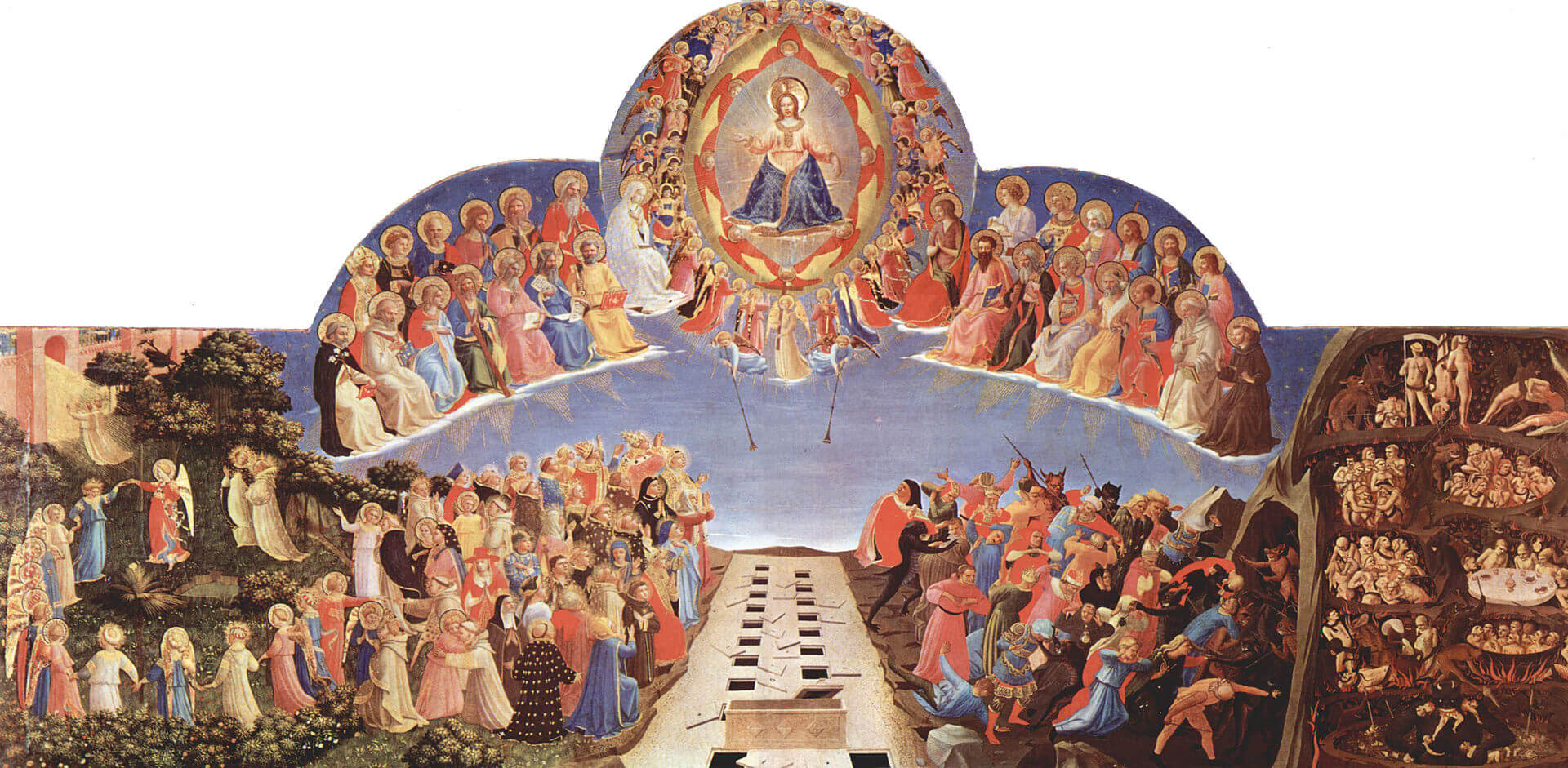Who is Fra Angelico? Information on Fra Angelico (Italian painter of the Early Renaissance) biography, life story, works and paintings.
Fra Angelico; (1400-1455), Italian painter, who was one of the great artists of the early Italian Renaissance. He was born Guido di Pietro at Vicchio, near Florence. The name “Angelico” (sometimes “Beato Angelico”) was not applied to him until late in life or after his death. In contemporary documents he is called Giovanni da Fiesole or da Firenze.

He was a Dominican friar whose style preserved the religious piety and many of the artistic conventions of the Middle Ages. His modeling of forms and his use of spatial perspective show, however, that he was responsive to the innovations of such contemporaries as Masaccio.
Unlike other painters of his time, Fra Angelico painted only religious subjects. Most of his works are traditional altarpieces for private devotions, many of them painted for monasteries at Fiesole and Florence and for the Vatican. Giorgio Vasari, a painter and biographer of the 16th century, said of Fra Angelico that “he would often say that whoever practiced art needed a quiet life and freedom from care, and that he who occupied himself with things of Christ [in art]ought always to be with Christ.”
Vasari, by erroneously reporting Fra Angelico’s death at 68 or 69, raised problems about the artist’s early life and the attribution of his works. Also, Fra Angelico’s conservative style was formerly attributed by some critics to a period of training in a monastic workshop. However, recently discovered evidence indicates that he was already well known as a painter in 1417, before he entered the Dominican order, in which he was ordained sometime between 1423 and 1425. It is clear, in any case, that his art developed out of the international Gothic style of Lorenzo Monaco and Gentile da Fabriano.

Annunciation, c. 1440-1445
The earliest surviving painting that can be attributed to Fra Angelico with certainty is the Madonna of the Linen Drapers’ Guild, or Linaiuoli altarpiece, now in the Museo di San Marco, Florence. Commissioned by the guild in 1433, the painting is in the artist’s mature style. Although it is typical of the international Gothic style in many ways, the painting substitutes a monumental simplicity for the Gothic profusion of detail. And although he used the pure or unmixed colors characteristic of the Gothic painters, Fra Angelico’s colors assume symbolic values in representing the pure light of heaven and the glow of untainted celestial beings.
Fra Angelico’s paintings of the later 1430’s and the early 1440’s include the Coronation of the Virgin (Louvre, Paris), and the Deposition and the Madonna Annalena, an altarpiece of the Virgin and Child with saints (both in the Museo di San Marco). During this period, Fra Angelico placed his large and simply modeled figures in an earthly environment enriched with delicate Tuscan loggias and porticos or in idyllic landscapes.
Around 1438, under the patronage of Cosimo de’ Medici, Fra Angelico decorated the newly rebuilt Dominican monastery of San Marco in Florence. He painted a large Crucifixion for the refectory, an Annunciation at the head of the stairs in the dormitory, and, with his assistants, 45 frescoes in individual cells. These works have an iconic monumentality that eliminates all distracting details of narrative.

San Marco, Florence,The Day of Judgement, upper panel of an altarpiece. It shows the precision, detail and colour required in a commissioned work
Pope Eugene IV summoned Fra Angelico to Rome around 1445 to decorate the Chapel of the Sacrament in the Vatican. Pope Nicholas V, succeeding Eugene in 1447, commissioned the artist to paint the great frescoes representing the lives of St. Lawrence and St. Stephen for his private chapel. In 1447, Fra Angelico and his assistants worked briefly in Orvieto decorating the vaults of the chapel of San Brizio in the cathedral. He died in Rome.